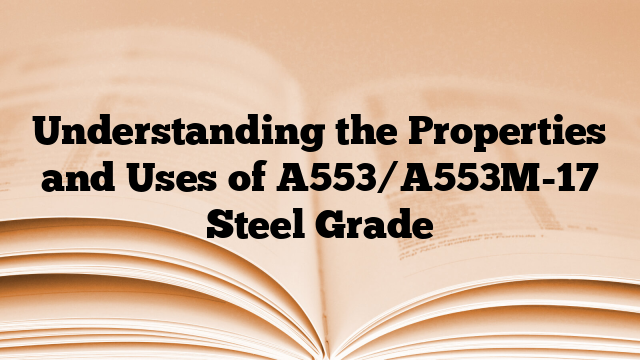The A553/A553M-17 steel grade is a standard specification for pressure vessel plates made of quenched and tempered manganese-molybdenum-nickel alloy steel. This grade is specifically designed for use in high-temperature service applications, such as in the fabrication of welded pressure vessels.
The chemical composition of A553/A553M-17 steel grade includes elements such as manganese, molybdenum, nickel, and carbon. The maximum carbon content is limited to 0.15%, which ensures good weldability and avoids potential carbon equivalent concerns. The addition of manganese, molybdenum, and nickel enhances the steel’s strength, toughness, and resistance to elevated temperatures.
The mechanical properties of A553/A553M-17 steel grade are specified based on minimum values for yield strength, tensile strength, and elongation. The minimum yield strength is 550 MPa, while the minimum tensile strength is 690 MPa. The steel exhibits good ductility, with a minimum elongation of 19%.
The A553/A553M-17 steel grade is primarily used in the fabrication of welded pressure vessels for service temperatures ranging from -196°C to 450°C (-320°F to 840°F). These vessels are commonly used in the oil and gas, petrochemical, and chemical processing industries. The steel’s high strength and excellent impact resistance make it suitable for handling high-pressure fluids and gases at elevated temperatures.
In conclusion, the A553/A553M-17 steel grade is a high-strength, quenched and tempered alloy steel specifically designed for use in pressure vessel applications. Its chemical composition and mechanical properties provide excellent weldability, strength, and toughness, making it suitable for use in high-temperature service conditions.

